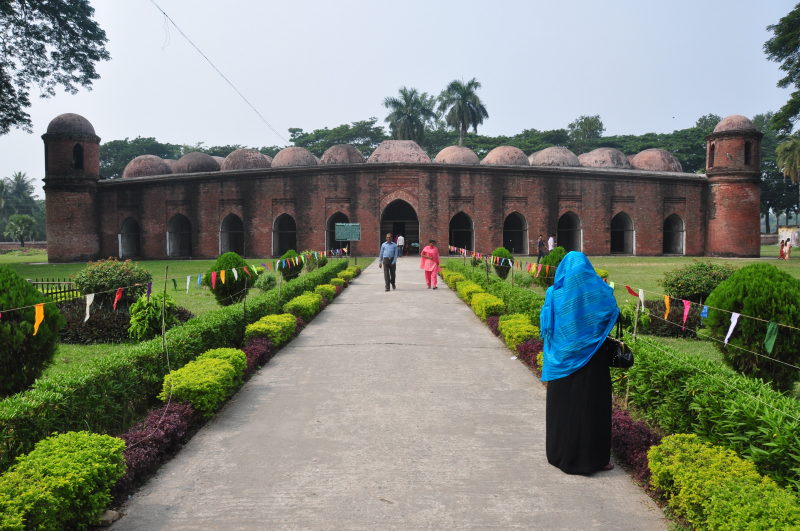The Sixty Dome Mosque
The Sixty Dome Mosque is one of the most beautiful historic sites in Bangladesh. It is part of Bagerhat's Mosque City, a UNESCO World Heritage Site. From the Sultanate period (1352–1576), it is Bangladesh's largest mosque. Khan Jahan Ali, the governor of the Sundarbans, erected it during the Bengal Sultanate.
A Muslim colony was formed in the Sundarbans mangrove forest along the coast in the Bagerhat District by a saint-General named Khan Jahan Ali in the middle of the 15th century. During Sultan Nasiruddin Mahmud Shah's reign, he preached in a wealthy city known as "Khalifatabad". Khan Jahan built more than a dozen mosques in this city, the ruins of which are concentrated around the Shait-Gumbad Masjid (160'108'), Bangladesh's most majestic and largest multi-domed mosque. The construction of the mosque began in 1442 and was finished in 1459. The mosque served as a prayer hall, as well as a madrasha and a gathering place.
The Sixty Dome Mosque has Tughlaq-style walls with extremely thick, tapered bricks and a hut-shaped roofline that foreshadows later forms. The mosque has an oblong layout that measures 148'6" x 101'4" on the outside and 123'3" x 76'2" on the inside. There are 81 domes in all, with 77 low domes placed in seven rows of eleven and one dome on each corner. There are four towers on the site. Slender columns divide the interior into multiple aisles and bays, culminating in numerous arches that support the roof.
Location: Bagerhat, Bangladesh











